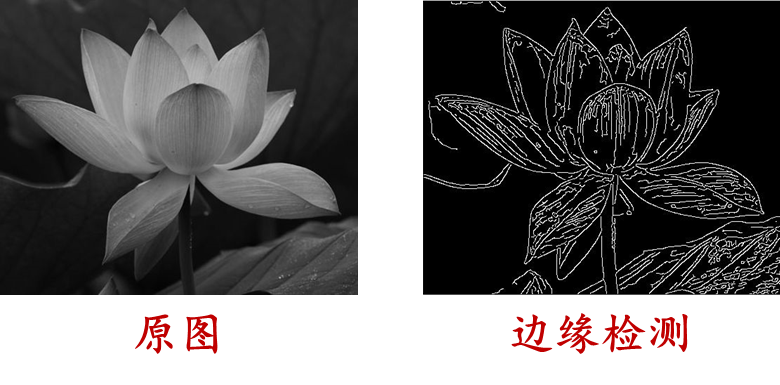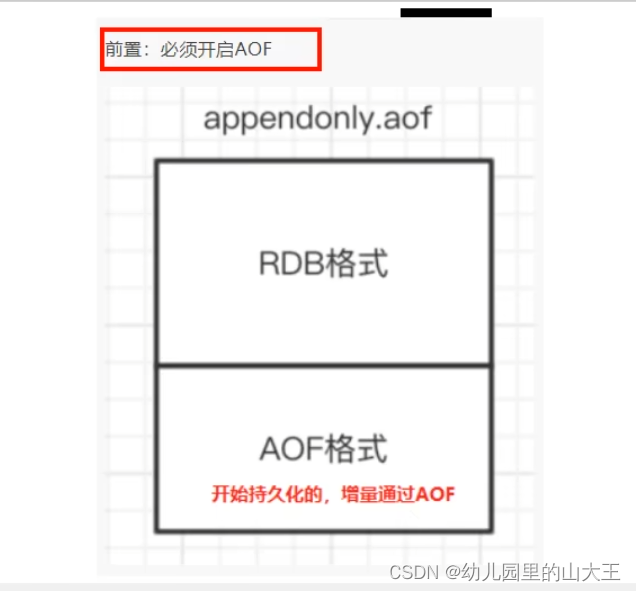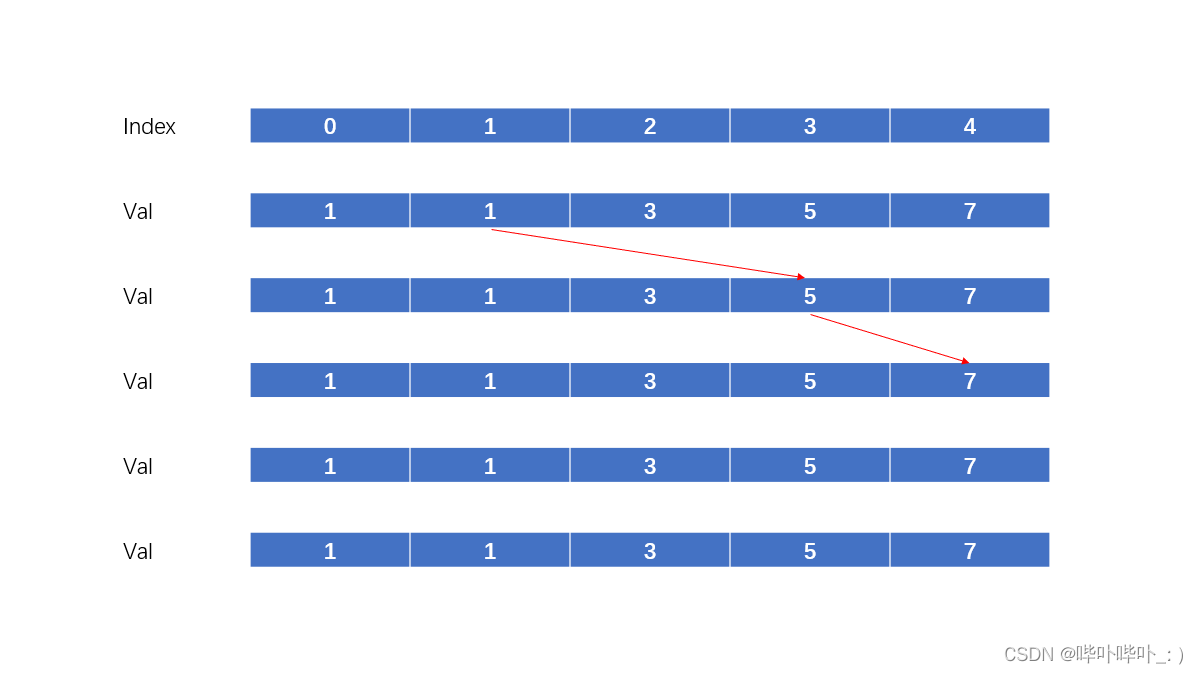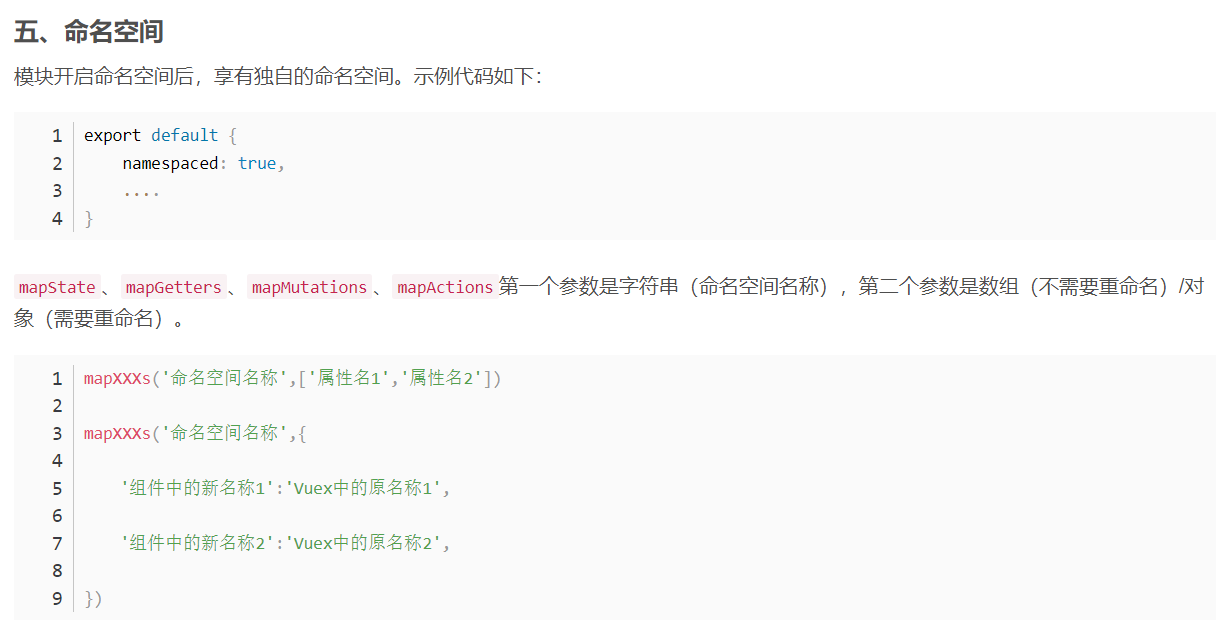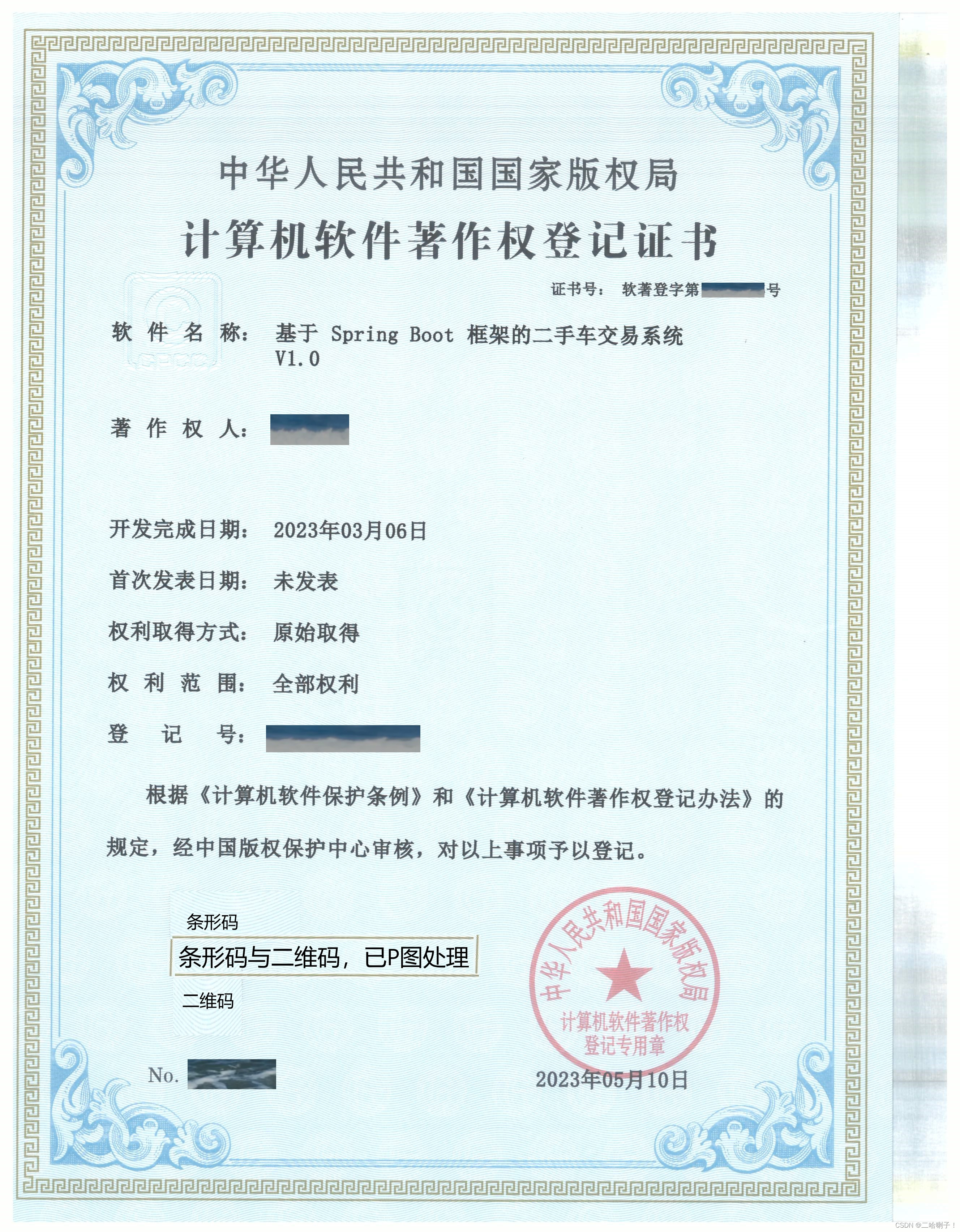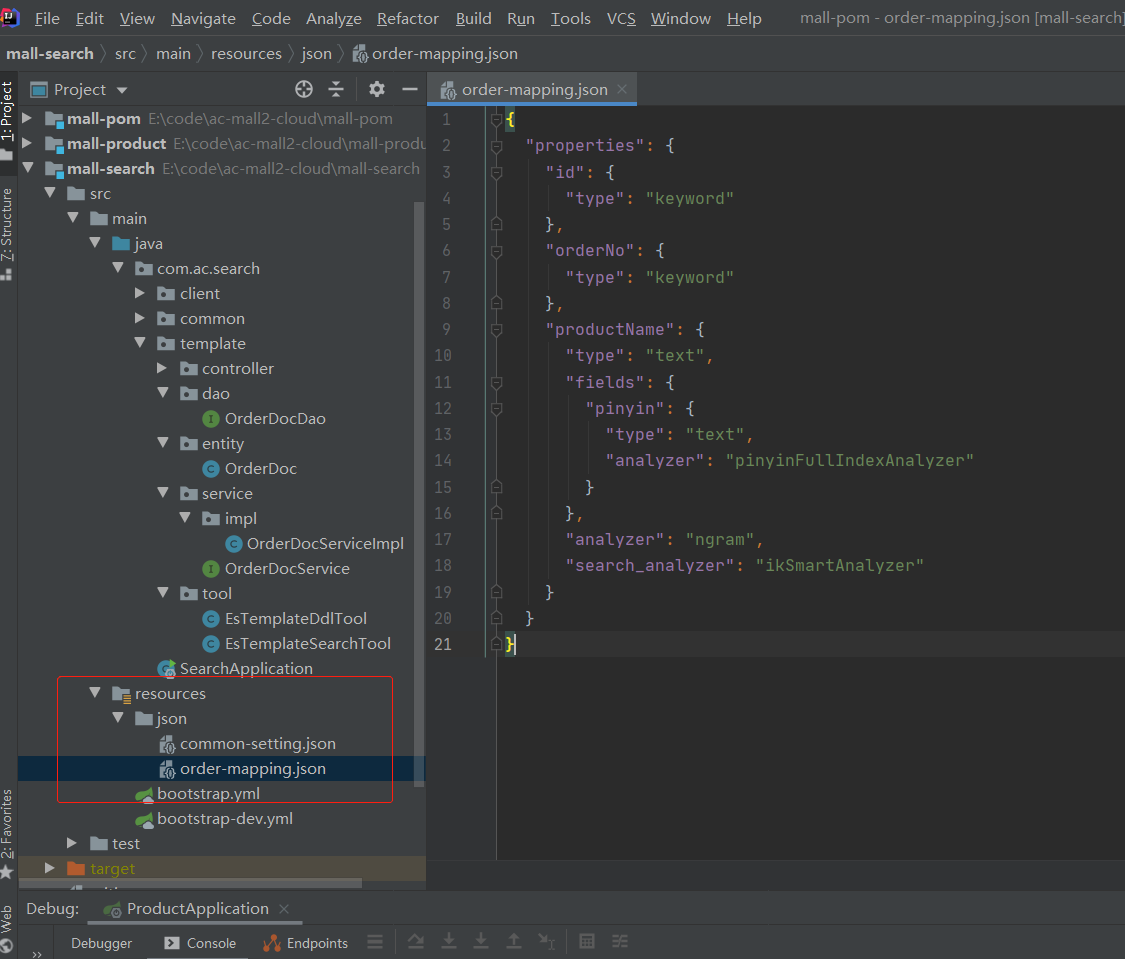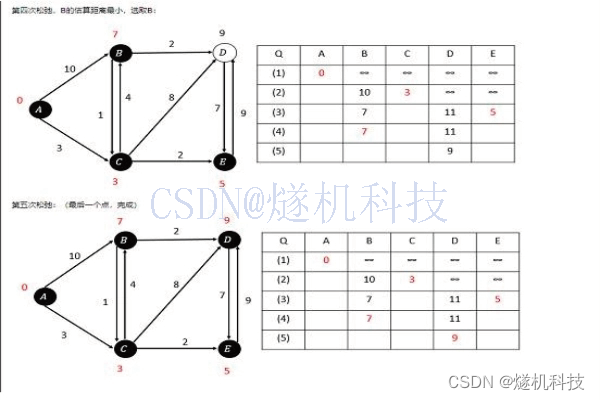一、生命周期的变化
1.vue2.响应式架构
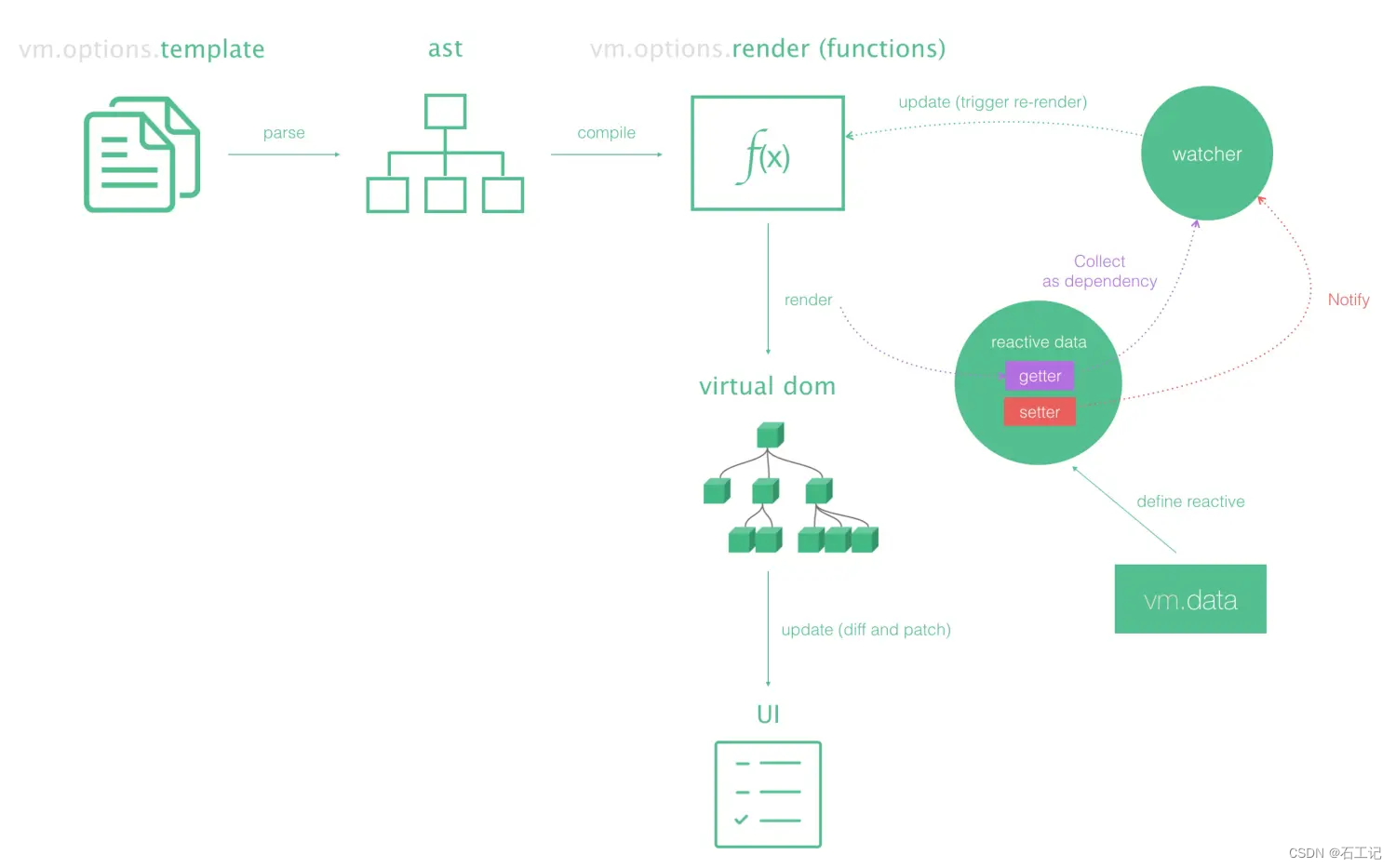
2.vue3.0 响应式架构图
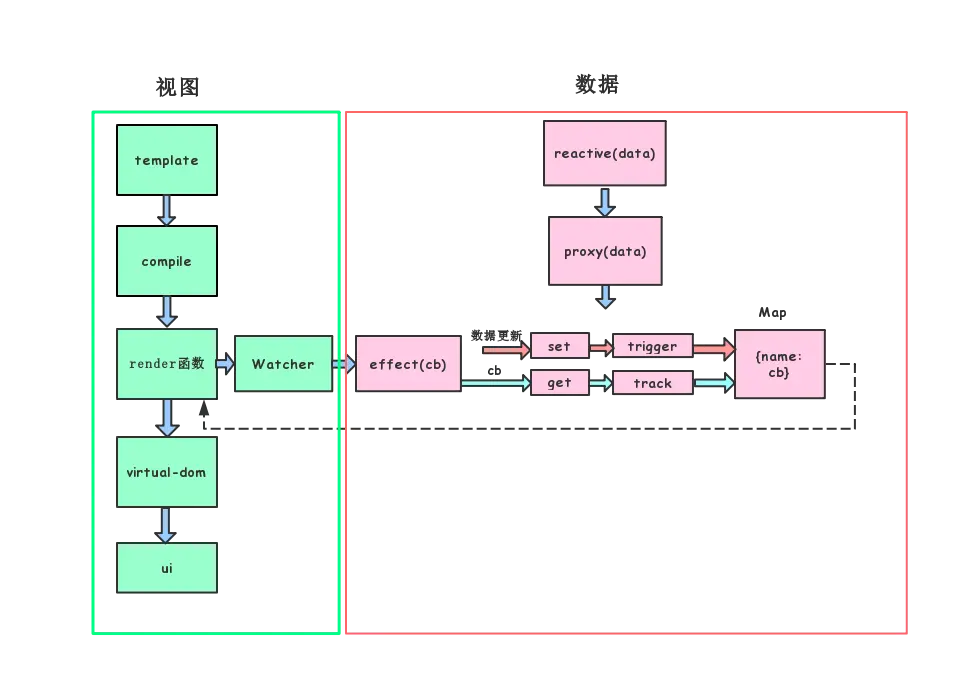
Vue3.0响应式框架在设计上,将视图渲染和数据响应式完全分离开来。将响应式核心方法effect从原有的Watcher中抽离。这样,当我们只需要监听数据响应某种逻辑回调(例如监听某个text属性的变化,对他进行正则校验等。),而不需要更新视图的时候,完全可以只从effect触发,屏蔽左边的视图渲染。
3.vue3.0与vue2.0页面比较
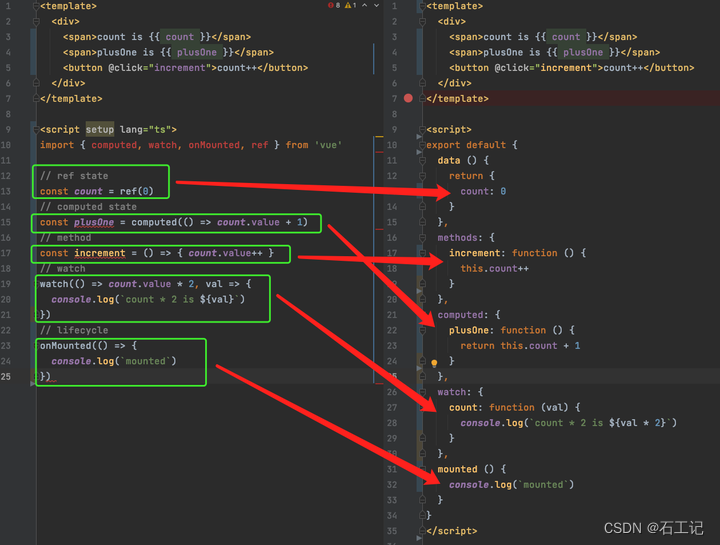
整体来看,变化不大,只是名字大部分需要 + on,功能上类似。使用上 Vue3 组合式 API 需要先引入;Vue2 选项 API 则可直接调用,如下所示。
// vue3
<script setup>
import { onMounted } from vue
onMounted(() => {...
})
// 可将不同的逻辑拆开成多个onMounted,依然按顺序执行,不被覆盖
onMounted(() => {...
})
</script>
// vue2
<script> export default { mounted() { ... }, }
</script>
常用生命周期表格如下所示。
| Vue2.x | Vue3 |
|---|---|
| beforeCreate | Not needed |
| created | Not needed* |
| beforeMount | onBeforeMount |
| mounted | onMounted |
| beforeUpdate | onBeforeUpdate |
| updated | onUpdated |
| beforeDestroy | onBeforeUnmount |
| destroyed | onUnmounted |
Tips: setup是围绕beforeCreate和created生命周期钩子运行的,所以不需要显式地去定义。
二、多根节点 Vue3 支持了多根节点组件,也就是fragment。
Vue2中,编写页面的时候,我们需要去将组件包裹在<div>中,否则报错警告。
<template> <div> <header>...</header> <main>...</main> <footer>...</footer> </div> </template>
Vue3,我们可以组件包含多个根节点,可以少写一层,niceeee !
<template> <header>...</header> <main>...</main> <footer>...</footer> </template>
二、异步组件 Vue3 提供 Suspense组件,允许程序在等待异步组件时渲染兜底的内容,如 loading ,使用户体验更平滑。使用它,需在模板中声明,并包括两个命名插槽:default和fallback。Suspense确保加载完异步内容时显示默认插槽,并将fallback插槽用作加载状态。
<tempalte><suspense> <template #default><todo-list /></template><template #fallback><div>Loading...</div></template> </suspense> </template>
真实的项目中踩过坑,若想在 setup 中调用异步请求,需在 setup 前加async关键字。这时,会受到警告async setup() is used without a suspense boundary。
解决方案:在父页面调用当前组件外包裹一层Suspense组件。
四、Teleport Vue3 提供Teleport组件可将部分DOM移动到 Vue app之外的位置。比如项目中常见的Dialog组件。
<button @click=dialogVisible = true>点击</button> <teleport to=body> <div class=dialog v-if=dialogVisible></div> </teleport>
五、组合式API Vue2 是 选项式API(Option API),一个逻辑会散乱在文件不同位置(data、props、computed、watch、生命周期函数等),导致代码的可读性变差,需要上下来回跳转文件位置。Vue3 组合式API(Composition API)则很好地解决了这个问题,可将同一逻辑的内容写到一起。
除了增强了代码的可读性、内聚性,组合式API 还提供了较为完美的逻辑复用性方案,举个🌰,如下所示公用鼠标坐标案例。
// main.vue
<template><span>mouse position {{x}} {{y}}</span>
</template>
<script setup>
import { ref } from vue
import useMousePosition from ./useMousePosition
const {x, y} = useMousePosition()
}
</script>
// useMousePosition.js
import { ref, onMounted, onUnmounted } from vue
function useMousePosition() {let x = ref(0)let y = ref(0)
function update(e) {x.value = e.pageXy.value = e.pageY}
onMounted(() => {window.addEventListener( mousemove , update)})
onUnmounted(() => {window.removeEventListener( mousemove , update)})
return {x,y}
}
</script>
解决了 Vue2 Mixin的存在的命名冲突隐患,依赖关系不明确,不同组件间配置化使用不够灵活。
六、响应式原理 Vue2 响应式原理基础是Object.defineProperty;Vue3 响应式原理基础是Proxy。
Object.defineProperty
基本用法:直接在一个对象上定义新的属性或修改现有的属性,并返回对象。 Tips: writable 和 value 与 getter 和 setter 不共存。
let obj = {}
let name = 瑾行
Object.defineProperty(obj, name , {enumerable: true, // 可枚举(是否可通过for...in 或 Object.keys()进行访问)configurable: true, // 可配置(是否可使用delete删除,是否可再次设置属性)// value: , // 任意类型的值,默认undefined// writable: true, // 可重写get: function() {return name},set: function(value) {name = value}
})
搬运 Vue2 核心源码,略删减。
function defineReactive(obj, key, val) {// 一 key 一个 depconst dep = new Dep()
// 获取 key 的属性描述符,发现它是不可配置对象的话直接 returnconst property = Object.getOwnPropertyDescriptor(obj, key)if (property && property.configurable === false) { return }
// 获取 getter 和 setter,并获取 val 值const getter = property && property.getconst setter = property && property.setif((!getter || setter) && arguments.length === 2) { val = obj[key] }
// 递归处理,保证对象中所有 key 被观察let childOb = observe(val)
Object.defineProperty(obj, key, {enumerable: true,configurable: true,// get 劫持 obj[key] 的 进行依赖收集get: function reactiveGetter() {const value = getter ? getter.call(obj) : valif(Dep.target) {// 依赖收集dep.depend()if(childOb) {// 针对嵌套对象,依赖收集childOb.dep.depend()// 触发数组响应式if(Array.isArray(value)) {dependArray(value)}}}}return value})// set 派发更新 obj[key]set: function reactiveSetter(newVal) {...if(setter) {setter.call(obj, newVal)} else {val = newVal}// 新值设置响应式childOb = observe(val)// 依赖通知更新dep.notify()}
}
那 Vue3 为何会抛弃它呢?那肯定是有一些缺陷的。
主要原因:无法监听对象或数组新增、删除的元素。 Vue2 方案:针对常用数组原型方法push、pop、shift、unshift、splice、sort、reverse进行了hack处理;提供Vue.set监听对象/数组新增属性。对象的新增/删除响应,还可以new个新对象,新增则合并新属性和旧对象;删除则将删除属性后的对象深拷贝给新对象。
Tips: Object.defineOProperty是可以监听数组已有元素,但 Vue2 没有提供的原因是性能问题,具体可看见参考第二篇 ~。
七、Proxy
Proxy是ES6新特性,通过第2个参数handler拦截目标对象的行为。相较于Object.defineProperty提供语言全范围的响应能力,消除了局限性。但在兼容性上放弃了(IE11以下)
八、局限性
对象/数组的新增、删除。
监测.length修改。
Map、Set、WeakMap、WeakSet的支持。
基本用法:创建对象的代理,从而实现基本操作的拦截和自定义操作。
const handler = {get: function(obj, prop) {return prop in obj ? obj[prop] : },set: function() {},...
}
搬运 Vue3 的源码 reactive.ts 文件
function createReactiveObject(target, isReadOnly, baseHandlers, collectionHandlers, proxyMap) {...// collectionHandlers: 处理Map、Set、WeakMap、WeakSet// baseHandlers: 处理数组、对象const proxy = new Proxy(target,targetType === TargetType.COLLECTION ? collectionHandlers : baseHandlers)proxyMap.set(target, proxy)return proxy
}
以 baseHandlers.ts 为例,使用Reflect.get而不是target[key]的原因是receiver参数可以把this指向getter调用时,而非Proxy构造时的对象。
// 依赖收集
function createGetter(isReadonly = false, shallow = false) {return function get(target: Target, key: string | symbol, receiver: object) {...// 数组类型const targetIsArray = isArray(target)if (!isReadonly && targetIsArray && hasOwn(arrayInstrumentations, key)) {return Reflect.get(arrayInstrumentations, key, receiver)}// 非数组类型const res = Reflect.get(target, key, receiver);// 对象递归调用if (isObject(res)) {return isReadonly ? readonly(res) : reactive(res)}return res
}
}
// 派发更新
function createSetter() {return function set(target: Target, key: string | symbol, value: unknown, receiver: Object) {value = toRaw(value)oldValue = target[key]// 因 ref 数据在 set value 时就已 trigger 依赖了,所以直接赋值 return 即可if (!isArray(target) && isRef(oldValue) && !isRef(value)) {oldValue.value = valuereturn true}
// 对象是否有 key 有 key set,无 key addconst hadKey = hasOwn(target, key)const result = Reflect.set(target, key, value, receiver)if (target === toRaw(receiver)) {if (!hadKey) {trigger(target, TriggerOpTypes.ADD, key, value)} else if (hasChanged(value, oldValue)) {trigger(target, TriggerOpTypes.SET, key, value, oldValue)}}return result
}
}
九、虚拟DOM Vue3 相比于 Vue2 虚拟DOM 上增加patchFlag字段。我们借助Vue3 Template Explorer来看。
技术摸鱼
今天天气真不错
{{name}}
渲染函数如下。
import { createElementVNode as _createElementVNode, toDisplayString as _toDisplayString, openBlock as _openBlock, createElementBlock as _createElementBlock, pushScopeId as _pushScopeId, popScopeId as _popScopeId } from vue
const _withScopeId = n => (_pushScopeId(scope-id),n=n(),_popScopeId(),n)
const _hoisted_1 = { id: app }
const _hoisted_2 = /*#__PURE__*/ _withScopeId(() => /*#__PURE__*/_createElementVNode(h1, null, 技术摸鱼, -1 /* HOISTED */))
const _hoisted_3 = /*#__PURE__*/ _withScopeId(() => /*#__PURE__*/_createElementVNode(p, null, 今天天气真不错, -1 /* HOISTED */))
export function render(_ctx, _cache, $props, $setup, $data, $options) {return (_openBlock(), _createElementBlock(div, _hoisted_1, [_hoisted_2,_hoisted_3,_createElementVNode(div, null, _toDisplayString(_ctx.name), 1 /* TEXT */)]))
}
注意第 3 个_createElementVNode的第 4 个参数即patchFlag字段类型,字段类型情况如下所示。1 代表节点为动态文本节点,那在 diff 过程中,只需比对文本对容,无需关注 class、style等。除此之外,发现所有的静态节点,都保存为一个变量进行静态提升,可在重新渲染时直接引用,无需重新创建。
export const enum PatchFlags { TEXT = 1, // 动态文本内容CLASS = 1 << 1, // 动态类名STYLE = 1 << 2, // 动态样式PROPS = 1 << 3, // 动态属性,不包含类名和样式FULL_PROPS = 1 << 4, // 具有动态 key 属性,当 key 改变,需要进行完整的 diff 比较HYDRATE_EVENTS = 1 << 5, // 带有监听事件的节点STABLE_FRAGMENT = 1 << 6, // 不会改变子节点顺序的 fragmentKEYED_FRAGMENT = 1 << 7, // 带有 key 属性的 fragment 或部分子节点UNKEYED_FRAGMENT = 1 << 8, // 子节点没有 key 的fragmentNEED_PATCH = 1 << 9, // 只会进行非 props 的比较DYNAMIC_SLOTS = 1 << 10, // 动态的插槽HOISTED = -1, // 静态节点,diff阶段忽略其子节点BAIL = -2 // 代表 diff 应该结束
}
十、事件缓存 Vue3 的 cacheHandler可在第一次渲染后缓存我们的事件。相比于 Vue2 无需每次渲染都传递一个新函数。加一个click事件。
技术摸鱼
今天天气真不错
{{name}}
{}>
复制代码 渲染函数如下
import { createElementVNode as _createElementVNode, toDisplayString as _toDisplayString, openBlock as _openBlock, createElementBlock as _createElementBlock, pushScopeId as _pushScopeId, popScopeId as _popScopeId } from vue
const _withScopeId = n => (_pushScopeId(scope-id),n=n(),_popScopeId(),n)
const _hoisted_1 = { id: app }
const _hoisted_2 = /*#__PURE__*/ _withScopeId(() => /*#__PURE__*/_createElementVNode(h1, null, 技术摸鱼, -1 /* HOISTED */))
const _hoisted_3 = /*#__PURE__*/ _withScopeId(() => /*#__PURE__*/_createElementVNode(p, null, 今天天气真不错, -1 /* HOISTED */))
const _hoisted_4 = /*#__PURE__*/ _withScopeId(() => /*#__PURE__*/_createElementVNode(span, { onCLick: () => {} }, [/*#__PURE__*/_createElementVNode(span)
], -1 /* HOISTED */))
export function render(_ctx, _cache, $props, $setup, $data, $options) {return (_openBlock(), _createElementBlock(div, _hoisted_1, [_hoisted_2,_hoisted_3,_createElementVNode(div, null, _toDisplayString(_ctx.name), 1 /* TEXT */),_hoisted_4]))
}
十一、Diff 优化 搬运 Vue3 patchChildren 源码。结合上文与源码,patchFlag帮助 diff 时区分静态节点,以及不同类型的动态节点。一定程度地减少节点本身及其属性的比对。
function patchChildren(n1, n2, container, parentAnchor, parentComponent, parentSuspense, isSVG, optimized) {// 获取新老孩子节点const c1 = n1 && n1.childrenconst c2 = n2.childrenconst prevShapeFlag = n1 ? n1.shapeFlag : 0const { patchFlag, shapeFlag } = n2
// 处理 patchFlag 大于 0 if(patchFlag > 0) {if(patchFlag && PatchFlags.KEYED_FRAGMENT) {// 存在 keypatchKeyedChildren()return} els if(patchFlag && PatchFlags.UNKEYED_FRAGMENT) {// 不存在 keypatchUnkeyedChildren()return}}
// 匹配是文本节点(静态):移除老节点,设置文本节点if(shapeFlag && ShapeFlags.TEXT_CHILDREN) {if (prevShapeFlag & ShapeFlags.ARRAY_CHILDREN) {unmountChildren(c1 as VNode[], parentComponent, parentSuspense)}if (c2 !== c1) {hostSetElementText(container, c2 as string)}} else {// 匹配新老 Vnode 是数组,则全量比较;否则移除当前所有的节点if (prevShapeFlag & ShapeFlags.ARRAY_CHILDREN) {if (shapeFlag & ShapeFlags.ARRAY_CHILDREN) {patchKeyedChildren(c1, c2, container, anchor, parentComponent, parentSuspense,...)} else {unmountChildren(c1 as VNode[], parentComponent, parentSuspense, true)}} else {if(prevShapeFlag & ShapeFlags.TEXT_CHILDREN) {hostSetElementText(container, )} if (shapeFlag & ShapeFlags.ARRAY_CHILDREN) {mountChildren(c2 as VNodeArrayChildren, container,anchor,parentComponent,...)}}
}
}
patchUnkeyedChildren 源码如下。
function patchUnkeyedChildren(c1, c2, container, parentAnchor, parentComponent, parentSuspense, isSVG, optimized) {c1 = c1 || EMPTY_ARRc2 = c2 || EMPTY_ARRconst oldLength = c1.lengthconst newLength = c2.lengthconst commonLength = Math.min(oldLength, newLength)let ifor(i = 0; i < commonLength; i++) {// 如果新 Vnode 已经挂载,则直接 clone 一份,否则新建一个节点const nextChild = (c2[i] = optimized ? cloneIfMounted(c2[i] as Vnode)) : normalizeVnode(c2[i])patch()}if(oldLength > newLength) {// 移除多余的节点unmountedChildren()} else {// 创建新的节点mountChildren()}
}
patchKeyedChildren源码如下,有运用最长递增序列的算法思想。
function patchKeyedChildren(c1, c2, container, parentAnchor, parentComponent, parentSuspense, isSVG, optimized) {let i = 0;const e1 = c1.length - 1const e2 = c2.length - 1const l2 = c2.length
// 从头开始遍历,若新老节点是同一节点,执行 patch 更新差异;否则,跳出循环 while(i <= e1 && i <= e2) {const n1 = c1[i]const n2 = c2[i]if(isSameVnodeType) {patch(n1, n2, container, parentAnchor, parentComponent, parentSuspense, isSvg, optimized)} else {break}i++
}
// 从尾开始遍历,若新老节点是同一节点,执行 patch 更新差异;否则,跳出循环 while(i <= e1 && i <= e2) {const n1 = c1[e1]const n2 = c2[e2]if(isSameVnodeType) {patch(n1, n2, container, parentAnchor, parentComponent, parentSuspense, isSvg, optimized)} else {break}e1--e2--}
// 仅存在需要新增的节点if(i > e1) { if(i <= e2) {const nextPos = e2 + 1const anchor = nextPos < l2 ? c2[nextPos] : parentAnchorwhile(i <= e2) {patch(null, c2[i], container, parentAnchor, parentComponent, parentSuspense, isSvg, optimized)}}}
// 仅存在需要删除的节点else if(i > e2) {while(i <= e1) {unmount(c1[i], parentComponent, parentSuspense, true) }}
// 新旧节点均未遍历完// [i ... e1 + 1]: a b [c d e] f g// [i ... e2 + 1]: a b [e d c h] f g// i = 2, e1 = 4, e2 = 5else {const s1 = iconst s2 = i// 缓存新 Vnode 剩余节点 上例即{e: 2, d: 3, c: 4, h: 5}const keyToNewIndexMap = new Map()for (i = s2; i <= e2; i++) {const nextChild = (c2[i] = optimized? cloneIfMounted(c2[i] as VNode): normalizeVNode(c2[i]))if (nextChild.key != null) {if (__DEV__ && keyToNewIndexMap.has(nextChild.key)) {warn(`Duplicate keys found during update:`,JSON.stringify(nextChild.key),`Make sure keys are unique.`)}keyToNewIndexMap.set(nextChild.key, i)}}
}
let j = 0// 记录即将 patch 的 新 Vnode 数量let patched = 0// 新 Vnode 剩余节点长度const toBePatched = e2 - s2 + 1// 是否移动标识let moved = falselet maxNewindexSoFar = 0
// 初始化 新老节点的对应关系(用于后续最大递增序列算法)const newIndexToOldIndexMap = new Array(toBePatched)for (i = 0; i < toBePatched; i++) newIndexToOldIndexMap[i] = 0
// 遍历老 Vnode 剩余节点for (i = s1; i <= e1; i++) {const prevChild = c1[i]// 代表当前新 Vnode 都已patch,剩余旧 Vnode 移除即可if (patched >= toBePatched) {unmount(prevChild, parentComponent, parentSuspense, true)continue}let newIndex// 旧 Vnode 存在 key,则从 keyToNewIndexMap 获取if (prevChild.key != null) {newIndex = keyToNewIndexMap.get(prevChild.key)// 旧 Vnode 不存在 key,则遍历新 Vnode 获取} else {for (j = s2; j <= e2; j++) {if (newIndexToOldIndexMap[j - s2] === 0 && isSameVNodeType(prevChild, c2[j] as VNode)){newIndex = jbreak}}
}
// 删除、更新节点// 新 Vnode 没有 当前节点,移除if (newIndex === undefined) {unmount(prevChild, parentComponent, parentSuspense, true)} else {// 旧 Vnode 的下标位置 + 1,存储到对应 新 Vnode 的 Map 中// + 1 处理是为了防止数组首位下标是 0 的情况,因为这里的 0 代表需创建新节点newIndexToOldIndexMap[newIndex - s2] = i + 1// 若不是连续递增,则代表需要移动if (newIndex >= maxNewIndexSoFar) {maxNewIndexSoFar = newIndex} else {moved = true}patch(prevChild,c2[newIndex],...)patched++
}}
// 遍历结束,newIndexToOldIndexMap = {0:5, 1:4, 2:3, 3:0}// 新建、移动节点const increasingNewIndexSequence = moved// 获取最长递增序列? getSequence(newIndexToOldIndexMap): EMPTY_ARR
j = increasingNewIndexSequence.length - 1
for (i = toBePatched - 1; i >= 0; i--) {const nextIndex = s2 + iconst nextChild = c2[nextIndex] as VNodeconst anchor = extIndex + 1 < l2 ? (c2[nextIndex + 1] as VNode).el : parentAnchor// 0 新建 Vnodeif (newIndexToOldIndexMap[i] === 0) {patch(null,nextChild,...)} else if (moved) {// 移动节点if (j < 0 || i !== increasingNewIndexSequence[j]) {move(nextChild, container, anchor, MoveType.REORDER)} else {j--}}}
}
十二、打包优化 tree-shaking:模块打包webpack、rollup等中的概念。移除 JavaScript 上下文中未引用的代码。主要依赖于import和export语句,用来检测代码模块是否被导出、导入,且被 JavaScript 文件使用。
以nextTick为例子,在 Vue2 中,全局 API 暴露在 Vue 实例上,即使未使用,也无法通过tree-shaking进行消除。
import Vue from vue
Vue.nextTick(() => {// 一些和DOM有关的东西
})
Vue3 中针对全局 和内部的API进行了重构,并考虑到tree-shaking的支持。因此,全局 API 现在只能作为ES模块构建的命名导出进行访问。
import { nextTick } from vue
nextTick(() => {// 一些和DOM有关的东西
})
通过这一更改,只要模块绑定器支持tree-shaking,则 Vue 应用程序中未使用的api将从最终的捆绑包中消除,获得最佳文件大小。受此更改影响的全局API有如下。
Vue.nextTick
Vue.observable (用 Vue.reactive 替换)
Vue.version
Vue.compile (仅全构建)
Vue.set (仅兼容构建)
Vue.delete (仅兼容构建)
内部 API 也有诸如 transition、v-model等标签或者指令被命名导出。只有在程序真正使用才会被捆绑打包。
根据 尤大 直播可以知道如今 Vue3 将所有运行功能打包也只有22.5kb,比 Vue2 轻量很多。
自定义渲染API Vue3 提供的createApp默认是将 template 映射成 html。但若想生成canvas时,就需要使用custom renderer api自定义render生成函数。
// 自定义runtime-render函数
import { createApp } from ./runtime-render
import App from ./src/App
createApp(App).mount( #app )
十三、TypeScript 支持 Vue3 由TS重写,相对于 Vue2 有更好地TypeScript支持。
Vue2 Option API中 option 是个简单对象,而TS是一种类型系统,面向对象的语法,不是特别匹配。
Vue2 需要vue-class-component强化vue原生组件,也需要vue-property-decorator增加更多结合Vue特性的装饰器,写法比较繁琐。
了解更多,我可关注wx视频号:石工记 DouY:石工记
